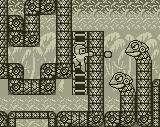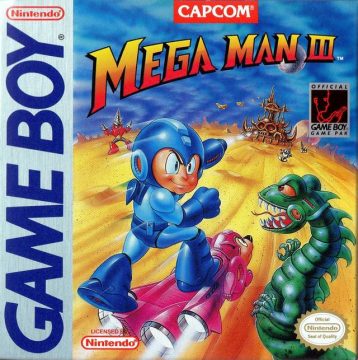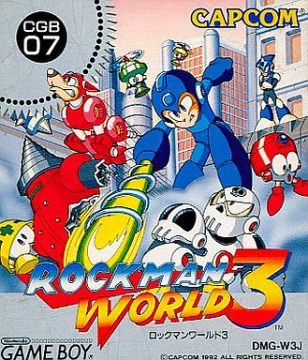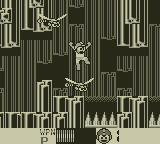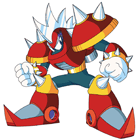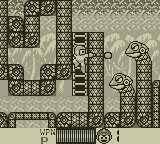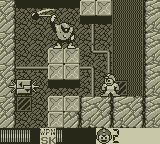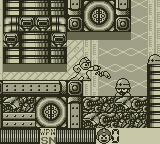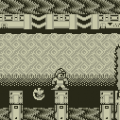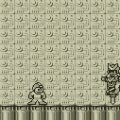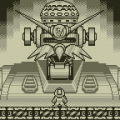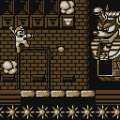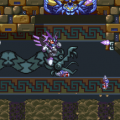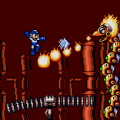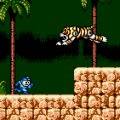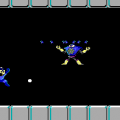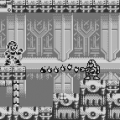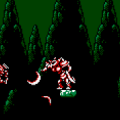- Mega Man (Series Introduction)
- Mega Man
- Mega Man 2
- Mega Man 3
- Mega Man 4
- Mega Man 5
- Mega Man 6
- Mega Man 7
- Mega Man 8
- Mega Man & Bass
- Mega Man 9
- Mega Man 10
- Mega Man 11
- Mega Man: Dr. Wily’s Revenge
- Mega Man II (Game Boy)
- Mega Man III (Game Boy)
- Mega Man IV (Game Boy)
- Mega Man V (Game Boy)
- Mega Man: The Wily Wars
- Mega Man (Game Gear)
- Rockman Complete Works
- Mega Man Anniversary Collection
- Mega Man 3 (DOS)
- Mega Man (DOS)
- Mega Man: Powered Up
- Super Adventure Rockman
- Wily & Right no RockBoard: That’s Paradise
- Mega Man Soccer
- Mega Man: The Power Battle
- Mega Man 2: The Power Fighters
- Rockman: Battle & Fighters
- Mega Man Battle & Chase
- Street Fighter x Mega Man
- Mega Man Tiger LCD Games
- Rockman & Forte (WonderSwan)
- Rockman’s IQ Challenge/Rockman Gold Empire/Rockman Strategy
- Mega Man Mobile Games / Panic Shot! Rockman
- Mega Man Unreleased Games
After the problematic outsourcing of Mega Man II, Capcom gave the developmental reins back to Minakuchi Engineering, who would work on the rest of the Game Boy lineup with consistently better results. The story doesn’t try anything fancy, merely having Dr. Wily drilling and drawing energy from the Earth via an off-shore oil platform to power his newly built machines. As usual, it’s four revived Robot Masters standing in the way to Wily’s fortress, only for four more to arrive like the calvary.
The developers finally found their groove with this title, making strides over the earlier stumbling blocks and serving as the engine framework for the rest of the Game Boy games. The sound effects have much more oomph and the sprites are a lot crisper. All the new tilesets take full advantage of the limited shades the system had available, filled with detail even in monochrome. One drawback is that the Robot Master stage music consists of direct downgraded arrangements of the original NES tunes with no surprises in the melodies. There also isn’t a lot of brand-new content aside from the first appearance of the timer bomb platforms. Much like the rest of the Game Boy games, the merging of games slips in mechanics and enemies across each original title. Those tadpole eggs are easy to mow down with Mega Man 4‘s Mega Buster, and those Hammer Joes from Mega Man 3 are prevalent within the later stages. Not to mention the new Wily stages and new Mega Man Killer.
RKN-002 Punk
Possibly the most deadly of the Mega Man Killers. Looking similar to Buzzsaw from Silverhawks, he tosses Screw Crushers like Metal Blades, able to slice Mega Man to ribbons with only a few saws. He then turns into a invulnerable spiked ball to fling himself across the room. His weapon flies in an upward arc in your hands though, making it the perfect tool to defeat the hard to reach Wily Machine weakness in this game. Being a favorite of Inafune, Punk recieved a NetNavi counterpart in Battle Network 3, a rare occurence for a non-Robot Master.
The third portable game also keeps the difficulty the first Game Boy adaption was known for. A lot of the frustration begins with the second half of the game, where bottomless pits and spikes litter most of the levels, where Pop-up or flying enemies have a tendency to knock Mega Man to a plummeting doom. Punk is possibly the toughest Mega Man Killer and he leads right into the lengthy sprawling Wily Marine Fortress that will kill Mega Man through attrition and fatigue with its limited checkpoints.
By now the Game Boy series was falling into a by-the-numbers routine much akin to its bigger brother NES counterparts. Mega Man III suffers from middle-child syndrome, generally lost in the myriad of portable titles and generally forgotten in the popular sense. It’s still a solid effort, though greatly overshadowed by the next two portable games.
